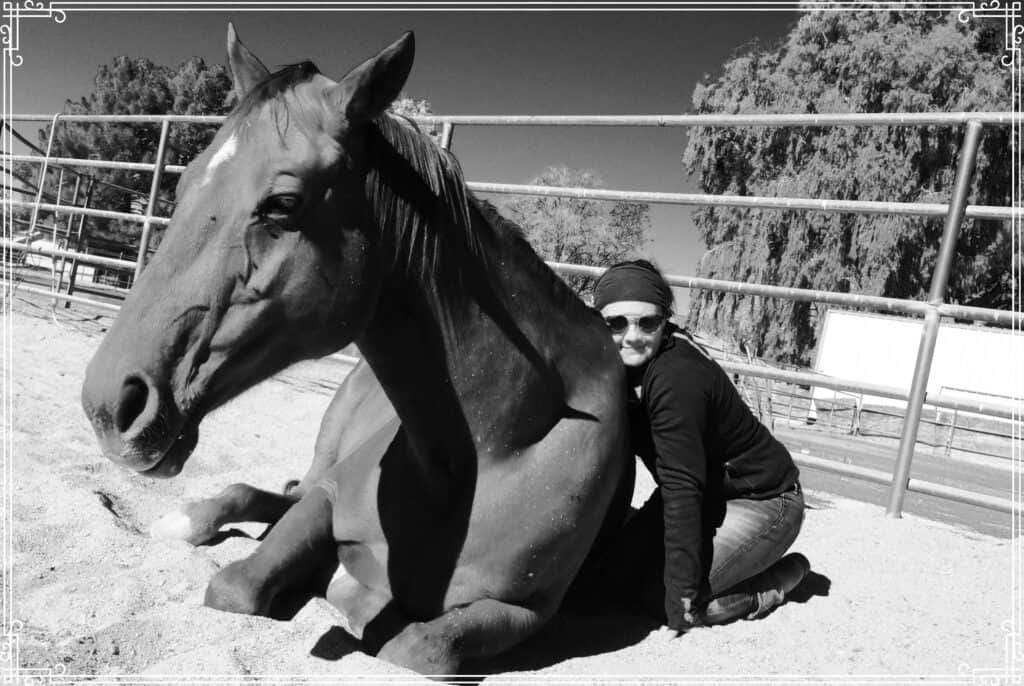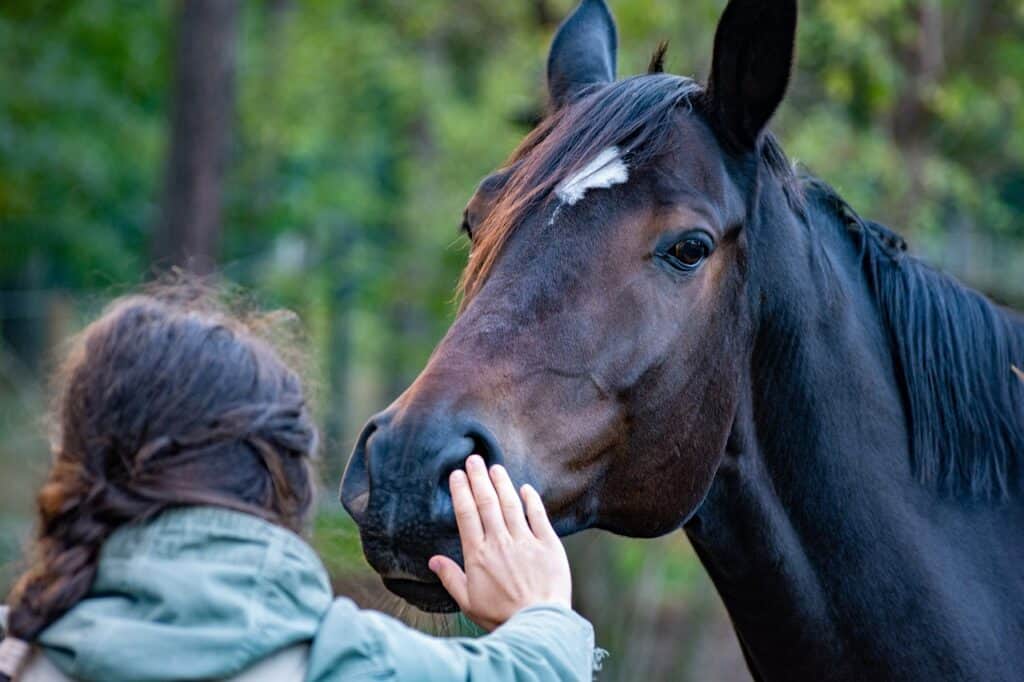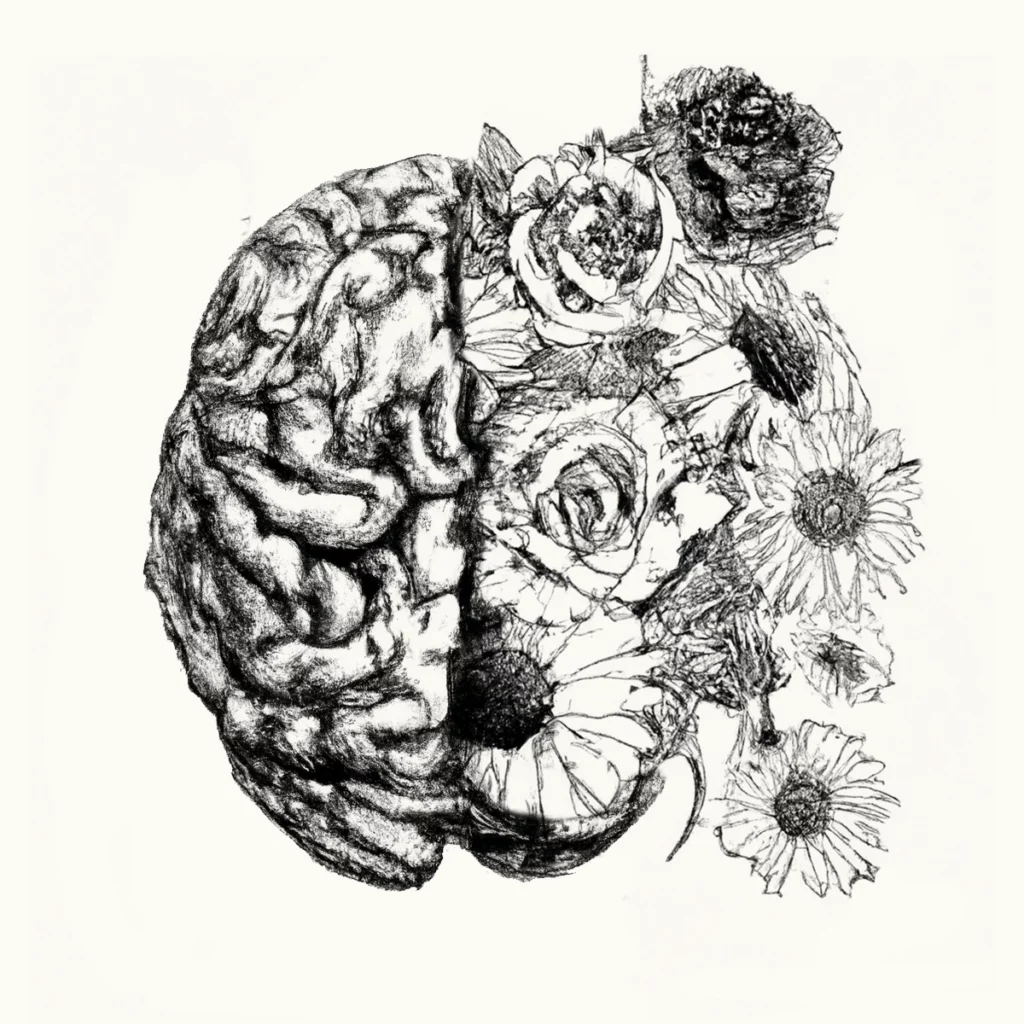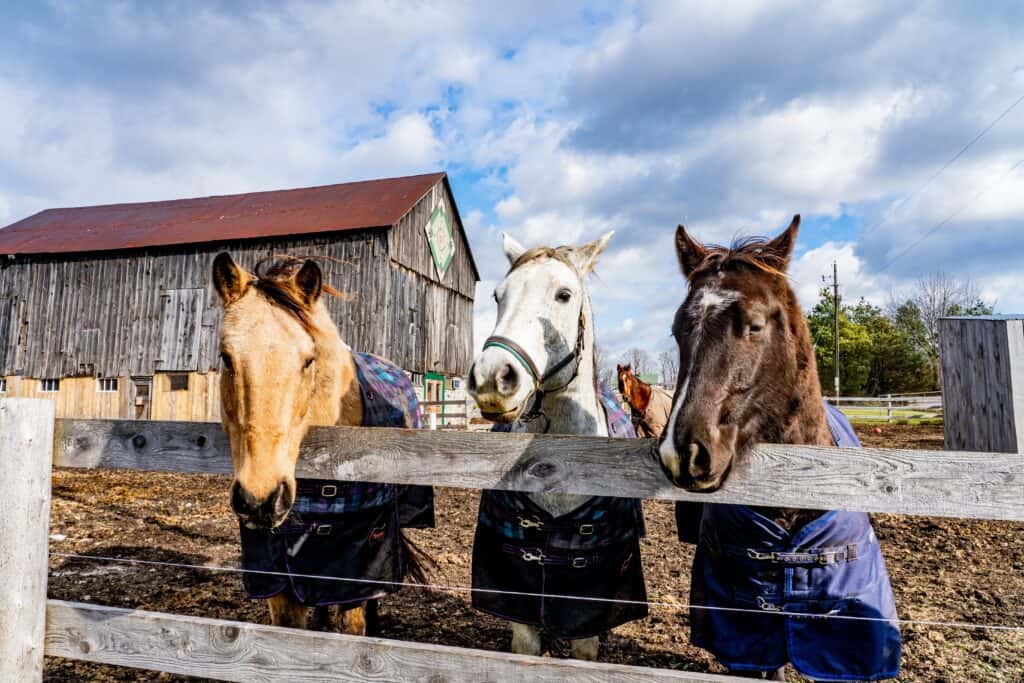I could feel my heartbeat increase even before my mind registered a reason for it to do so. For a long time, my body would respond before my mind could catch up with the “why.” As a trauma therapist with over twenty + years of experience, also having done a ton of my own personal trauma work, there would still be some undertow, some kind of underlying distress in some riding situations, a bracing against an “uh oh,” or “something is going to happen,” which I knew was linked to a variety of equine, and non-equine related traumas, many of which I had also done a ton of trauma processing around. But I still got it instinctively, and in my bones, more was underneath what was already processed.
But, what was confusing is that “it” was a vague and incongruent, often illusive state, for more often than not, there wasn’t fear or anxiety paired with it. It felt like it went beyond and under and even deeper than a PTSD response. I would find my shoulders rising to my ears and my body bracing. The “uh oh, something’s going to happen” was as if some non-descript villain was lurking in some awful B-grade movie, threatening to rise from the deep depths of my mind, to pounce on me at any minute, and for no reason. And trust me, I dug deep in my trauma work to find it.
I bring this personal example up to share that despite doing tons of trauma processing, we can still have unhealed “stuff” that can impact our ability to fully process traumatic experiences and interpersonal interactions. There are likely unhealed moments when we first “clue in” that something is wrong,” “off,” and an “oh no” state that comes even before our emotions and defenses kick in. As one would expect, there are myriad examples of such moments from our trauma histories and certainly our unhealed attachment wounds.
What I found, eventually, was that my unprocessed shock and horror of seemingly micro-moments had built up over time. It has been a game changer for me to be able to get to access that low-grade “rev” that would have no rational explanation, not even a discernible “cause,” albeit it was there, a lurking shadow from the depths of my mind, threatening to clamor up from the basement, the depths of my brainstem. It was some quintessential unhealed subcortical material, which was beneath it all. It was material that I hadn’t reached because it was underneath it all, literally, in a lower level of my brain. That’s what would get activated, and that’s what was still unprocessed. Subcortical.
For me, the experience was that the state would still show up, but not with a sense of anxiety or fear, just a deep sense of impending doom. My awareness of my tendency to brace hit my stomach like a rock, but there were no words for it. It would come in micro-moments and shock waves, especially when I saw my mare’s ear flick, if she looked a certain direction, if she just had the slightest almost imperceptible stumble, or if I was riding her, and her ribs would move a certain way. This unease would even show up when I would transition to higher gaits or sometimes situations of trailering, even seemingly “small” “no big deal” moments.
Many of these moments were deeply rooted in my horsemanship and the myriad of equine-related traumas that I had experienced. It manifested in that I would find myself struggling in my horsemanship and tripping over my feet, sometimes uncertain which way was up and which was down. Maybe you can relate.
These experiences also can add a layer of unease around our horsemanship, which can be deeply painful, especially as our horsemanship can be the very thing that also brings us the greatest joy. There can be a true conflict there. But trust me, it’s worth looking at. For those of us who co-facilitate with horses in doing deep healing work with clients, our unhealed shock can also add a layer of unhealed distress around the equine-related services we provide.
If we equestrians and equine-facilitated/assisted practitioners don’t get to this deep layer of material, it will show up in our work with clients and let alone in our horsemanship. It will show up as the “oh oh” moments where we brace against, perhaps seeing our horses’ ear flick back, perhaps a misstep or stumble, move quickly, or even how we see and react in moments in the arena when we are co-facilitating therapy sessions with horses. These are all examples of the cues that can trigger us immediately, even without thought or emotion, into a state of unease and distress, and very quickly. Our deepest parts of our brain will go into “something’s wrong” before we even register the why. We often don’t get to this state but need to for ourselves, our horses, and our clients.
But, if you are a therapist doing equine assisted/facilitated work, an equine specialist, an equine professional, or an equestrian, there is hope. We don’t have to feel like we have to white knuckle it or push through it and “just get back on the horse” to enjoy our love of horses. As I always say, we know that presence is the through line for all of this work.
Many of you reading this have also moved into some of this work in various equine-related demonstrations with me through the years. As you know, it can be a profound experience to find ourselves present to what is happening in the here-and-now-moment instead of what our traumatized deep brain may be telling us.
With this in mind, I am currently scheduling custom intensives with a special focus on equine-related incidents and distress. Openings come available in the summer of 2023. For confidentiality reasons, please, do not post an interest in the chat below; please call me at 480.370.7630 to learn more.




